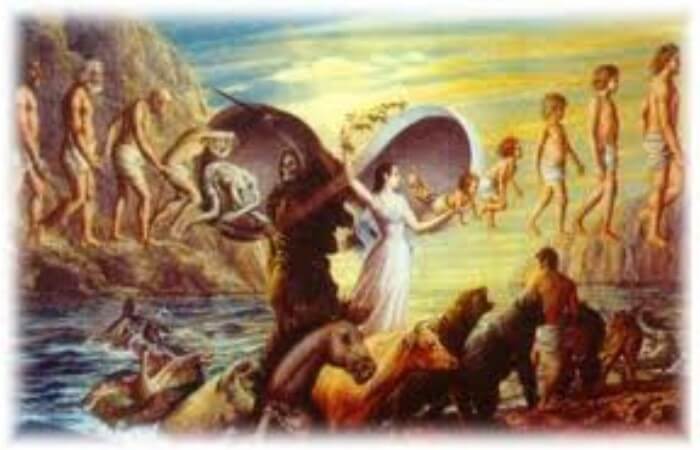Author: Randeep Singh / go to all Samkhya Karikas

Samkhya Karika 55 text:
Tatra jaramaranakrtam dukham prapnoti chetanah purushah |
Lingasya avinivrtteh tasmaad dukham svabhaavena |
Tarta- from there, within
Jaramaranakrtam – emerging from death or degeneration
Dukham – suffering, pain
Prapnoti – gains experiences
Chetanah purushah – conscious spirit
Lingasya – of the subtle body
Avinivrtteh – non stoppage, continuously
Tasmaad – therefore
Dukham – pain
Svabhaavena – nature of self
Samkhya karika 55 talks about the fact that one thing is common to all the three worlds, as discussed in the previous karika, and that is pain and suffering. Rather, Isvar Krsna, the author of Samkhya philosophy, right in the beginning has described the three main sufferings which pervade the material world and how these suffering lack a permanent cure.
As per Samkhya Darshan Purusha is the one who experiences the manifested material world (Prakriti). These experiences are generated by the intellect (Buddhi) from the information collected, from the material world, by the external sense organs and presented to the internal sense organs for its analysis and interpretation as an experience.
So, its the Purusha (spirit, consciousness) which experience the pain and suffering inherent in the three worlds.
Samkhya Karika 55, Suffering Stays till Subtle body Exists
The three worlds as mentioned are very muct the part of Prakriti, matter, and thus are subject to decay and death. This degeration and death of the material body causes pain and suffering. Indian philosophy differentiates between three types of bodies or ‘sarira.’
These three types of bodies are the ‘karya’ (physical), ‘karana’ (causal), and ‘sukshama’ (subtle body). All the three types of bodies constitute an individual or a being.
Karya sarira or the physical body is made up of material elements (mahabhutas) and it is this body which is prone to decay, degeneration and death. Karana sarira (causal body) is the subtlest of the three and is composed of the impressions (samskaras) of one’s karma (actions), on it. Out of the three its the causal body which gets carried across different lives of an individual in the form of subtle energy.
The subtle body on the other hand comprises of intellect (Buddhi), Ahamkara (Ego), and the Manas (mind) along with other evolutes of Prakriti.
The subtle body is the one which keeps one alive, all the vital functions of the body like breathing form a part of subtle body. Experience which is presented to the spirit is created here, the experience of suffering and pain is also generated here.
Generation of the experiences of suffering and pain are naturally inherent in the subtle body. Pain and suffering will exist up till the time subtle body will exist. The aim of learning, and understanding Samkhya, or spirituality in general, is to dissolve the subtle body for good so that the Purusha becomes free of experiencing any suffering.
One has to understand that Purusha is the reality one must strive to experience in order to free oneself from suffering which is a natural outcome of one’s material existence. Attachments, desires and aversions all exist at the level of the subtle body and that is why they are the reason behind all the pain and the suffering the spirit experiences.
One needs to make a conscious effort to free oneself of the restrictions of the material existence (subtle body) and experience one’s spirit.
Human birth is an opportunity to grow and progress on this path and transform one’s experiences by utilising the four positive bhavas inherent in Buddhi (Intellect). Use the intellect to alter how the subtle body reads the material world and, from there create painless experiences for the Purusha to go through.
The ultimate purpose of life is to progress at the level of Buddhi (intellect) and free oneself of the cyle of birth and death by completely dissovling the subtle body.
The ever changing nature of Prakriti is not to scre humans by projecting uncertainity but to push them to progress towards realisaion of the Purusha oe the real self.
